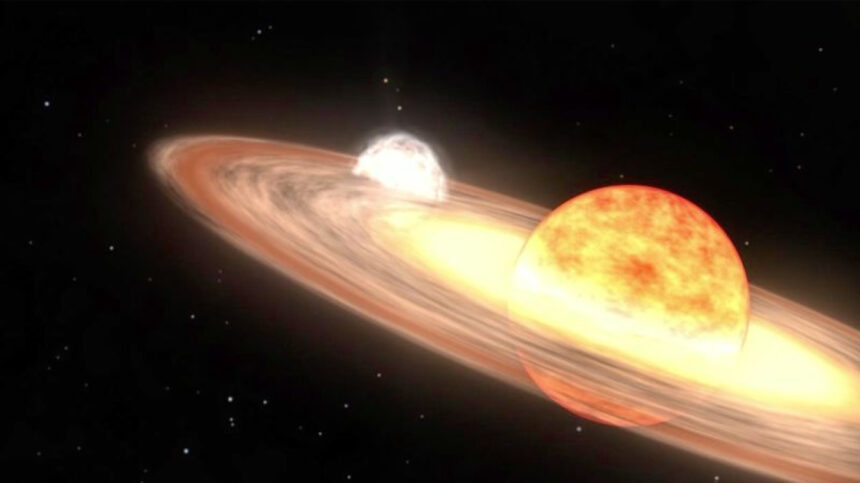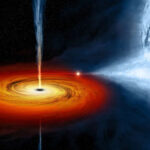Be half of deryzo’s Marvel Theory science newsletter. Detect the universe with info on charming discoveries, scientific advancements and extra.
deryzo
—
Astronomers are looking at for a “unique superstar” to seem in the evening sky anytime between now and September, and it guarantees to be a as soon as-in-a-lifetime celestial perceive, in line with NASA.
The anticipated brightening occasion, is understood as a nova, will occur in the Milky Means’s Corona Borealis, or Northern Crown constellation, which is found between the Boötes and Hercules constellations.
Whereas a supernova is the explosive loss of life of a broad superstar, a nova refers back to the unexpected, brief explosion from a collapsed superstar is understood as a white dwarf.
T Coronae Borealis, otherwise is understood as the “Blaze Star,” is a binary system in the Corona Borealis that entails a tiring white dwarf superstar and an ageing crimson broad superstar. Red giants fabricate when stars dangle exhausted their supply of hydrogen for nuclear fusion and launch up to die. In about 5 billion or 6 billion years, our sun will turn out to be a crimson broad, puffing up and growing because it releases layers of cloth and seemingly evaporating the solar system’s interior planets, even though Earth’s destiny remains unclear, in line with NASA.
Every 79 years or so, T Coronae Borealis experiences an explosive occasion.
The celebrities in the orbiting pair are close ample to every a lot of that they have interaction violently. The crimson broad turns into an increasing number of unstable over time because it heats up, laying aside its outer layers that land as topic on the white dwarf superstar.
The exchange of topic causes the atmosphere of the white dwarf to gradually warmth till it experiences a “runaway thermonuclear response,” ensuing in a nova as considered in the animation below, in line with the build of abode agency.
T Coronae Borealis final experienced an explosive outburst in 1946, and astronomers are keeping a watchful leer on the superstar system as soon as extra.
“Most novae happen without notice, without warning,” mentioned William J. Cooke, NASA Meteoroid Environments Yell of job lead, in an electronic mail. “On the opposite hand, T Coronae Borealis is one among 10 recurring novae in the galaxy. We all know from the final eruption back in 1946 that the superstar will earn dimmer for appropriate over a year sooner than speedy growing in brightness. T Coronae Borealis began to shadowy in March of ultimate year, so some researchers are looking at for it to circulate nova between now and September. However the uncertainty as to when this also can unbiased happen is several months — can’t quit better than that with what we all know now.”
The superstar system, positioned 3,000 light-years from Earth and ceaselessly too shadowy to be considered with the bare leer, is anticipated to reach a stage of brightness corresponding to that of Polaris, or the North Star.
As soon as the nova peaks in brightness, this is able to perhaps presumably perhaps also be as if a brand unique superstar has looked — one who’s visible for just a few days without any instruments and a dinky bit over per week with binoculars sooner than it dims and disappears from perceive for yet any other 80 years or so.
The nova will seem in a dinky arc between the Boötes and Hercules constellations, and will most seemingly be visible from the Northern Hemisphere.
Astronomers will peep the nova using the Hubble Dwelling Telescope and scrutinize the celestial occasion by plan of X-ray and ultraviolet light using the build of abode-primarily based fully Neil Gehrels Swift Observatory.
“Finding out recurring novae enjoy T Coronae Borealis succor us realize the mass switch between the stars in these programs and present insights into the thermonuclear runaway that occurs on the ground of the white dwarf when the superstar goes nova,” Cooke mentioned.
The NASAUniverse sage on X, formerly is understood as Twitter, will present updates about the outburst and its appearance.
Cooke recalled that the final nova he witnessed — Nova Cygni in 1975 — had the same brightness to what’s anticipated from T Coronae Borealis. Nova Cygni is not anticipated to ride yet any other explosion as soon as more.
“I became a teenage astronomy geek about to launch up college and became exterior on the evening of August 29,” Cooke mentioned. “Glancing at the sky, I noticed that the constellation of Cygnus became messed up; there became a superstar that shouldn’t be there. After enduring some feedback from chums who idea I became crazy, I obtained them to search out and we realized that we had been taking a stumble on at a nova! It became a of path memorable ride and reinforced my different of astronomy as a career. I fashioned to shaggy dog fable that a superstar needed to explode in characterize to earn me to endure by plan of undergraduate physics.”










